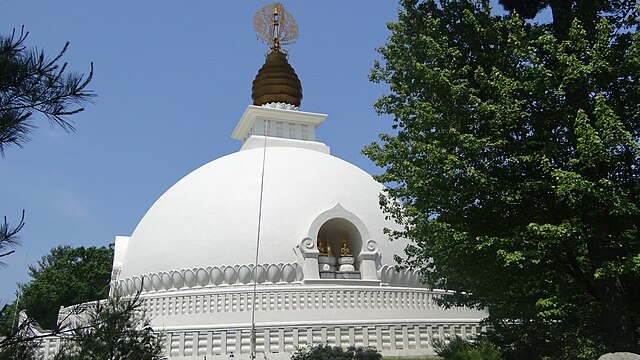A Peace Pagoda is a Buddhist stupa: a monument to inspire peace, designed to provide a focus for people of all races and creeds, and to help unite them in their search for world peace. Most, though not all, peace pagodas built since World War II have been built under the guidance of Nichidatsu Fujii (1885–1985), a Buddhist monk from Japan and founder of the Nipponzan-Myōhōji Buddhist Order. Fujii was greatly inspired by his meeting with Mahatma Gandhi in 1931 and decided to devote his life to promoting non-violence. In 1947, he began constructing Peace Pagodas as shrines to world peace. The first was inaugurated at Kumamoto in 1954.
Shanti Stupa, Ladakh, India.
World Peace Pagoda Analayo in Comilla
Shanti Stupa (Peace Pagoda) at Rajgir.
Japanese Peace Pagoda in Darjeeling
Nipponzan-Myōhōji-Daisanga
Nipponzan-Myōhōji-Daisanga (日本山妙法寺大僧伽), often referred to as just Nipponzan Myohoji or the Japan Buddha Sangha, is a Japanese new religious movement and activist group founded in 1917 by Nichidatsu Fujii, emerging from Nichiren Buddhism. "Nipponzan Myōhōji is a small Nichiren Buddhist order of about 1500 persons, including both monastics and lay persons." The community reveres the Lotus Sutra as the highest expression of the Buddhist message.
Stupa in Gotemba, Shizuoka, Japan
The Nipponzan-Myōhōji temple in Milton Keynes, England
The New England Peace Pagoda







